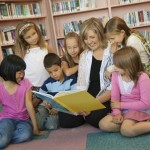Tips for homeschoolers and teachers on creating a lesson plan.
by Ann Bowers
Madeleine Hunter, an educator of great renown, who helped establish the University of California at Los Angeles’ (UCLA) Elementary School, was the first to develop an effective lesson plan format for teachers to use. She identified several vital factors for learning that were not included in most lessons taught to children. She incorporated these factors into her basic lesson plan. The basic lesson plan has been modified at times (for example, “State Standard Addressed” was added in the late 1990s), but the format has stood the test of time and performed well in helping schools raise test scores.
Madeleine Hunter’s Basic Lesson Plan Format
Lesson Title/Subject/Grade Level
Each lesson should have a title for reference. It’s a good idea to add the grade levels or ages for which it can be used and the subject being addressed. For example, “Introduction to Multiplication.” Grade level: 2. Subject: Mathematics.
Materials Needed
List all materials needed, including books, writing materials, reference materials, manipulatives, copies of worksheets, templates, maps, globe, visuals, auditory materials, and tools: such as scissors, crayons, rulers, calculators, a computer, a chalkboard or whiteboard, chalk or whiteboard pens, overhead projector, projector film, etc. Include the lesson plan as a needed material. List the pages in the books or reference materials that will be used.
Goal Statement
Create a one sentence statement of the goal of the lesson. Answer this question: What will the student know or be able to do when the lesson is over, and to what level of mastery? A statement such as: “The teacher will explain how to multiply” is not acceptable.
An example of a good goal statement would be:
At the conclusion of the lesson, the second graders will understand that multiplication is the same as repeated addition. They will be able to multiply by 2s, using beans as counters, getting at least 5 problems correct out of 10.”
(Remember! This is an introduction to multiplication and the lesson will be followed by many, many more to improve their skills and understanding of multiplying. Eventually, they will be expected to get 90% of multiplication problems correct, multiplying by 2’s, 1’s, 0, 5’s, and 10’s – in 2nd grade.)
State Standard Addressed
In this section, the teacher lists the state standard being focused on in the lesson.
Review
Before the new lesson begins, the teacher briefly reviews any concepts or skills previously learned that will be needed in the new lesson. For example, before teaching multiplication, children should be able to recognize numbers 0 to 25 and add numbers from 0 to 20.
Anticipatory Set
The Anticipatory Set is the section in which the lesson plan writer describes how he/she will capture the student’s interest and involve them in the lesson. There are many ways in which to do this.
Instruction
This is the section that explains how the children will be instructed. For example, the teacher might: explain, demonstrate, have students come to the chalkboard and work problems, have students show how to do problems using manipulatives, write and read aloud, answer and ask questions, etc.
Guided Practice
This is the section in which the teacher and the students work problems, answer questions, write, etc. together. The teacher demonstrates the skill as the students follow along, also demonstrating the skill on paper or with manipulatives or orally. This section is often skipped, which is a serious mistake on the part of the teacher. It is here that children really learn the skill and the teacher has an opportunity to observe them, correct mistakes, and re-explain and re-demonstrate the information to be learned. Guided practice may take place in one session or many – learning to multiply will take place in many sessions.
Independent Practice
This practice is done by the student without the teacher’s help, in school or at home. Work done independently should always be checked, either in a group or by the teacher. Mistakes made should be noted and addressed by the teacher in subsequent lessons. If it becomes obvious the children did not learn the concept/skill, it should be re-taught and more guided practice should take place.
Closure
Closure occurs at the end of the lesson. Students are asked to do one more problem correctly, restate what they have learned, or summarize a procedure orally or in writing.
Review
Review occurs in subsequent lessons and routinely on a weekly and monthly basis so that students do not forget what they have learned. Homework often focuses on reviewing prior learning. Tests also are a form of review.
Using a lesson plan is an important way in which to plan and prepare for teaching, maximize children’s learning, make learning fun, and help children remember what they have learned.
|
Ann Bowers has been an elementary school teacher, in kindergarten through 8th grade, for 20 years. She was a Bilingual Education Grant Project Coordinator for seven years and a school principal for seven. She has a B.A. in English, an M.A. in Education, and holds California Life Teaching Credentials and specialist credentials in Remedial Reading and Teaching English as a Second Language. She is retired and has started a second career as a freelance writer. No part of this article may be copied or reproduced in any form without the express permission of More4Kids Inc © 2006 |
Posting Search Tags: education homeschooling teachers lesson plans










Add Comment